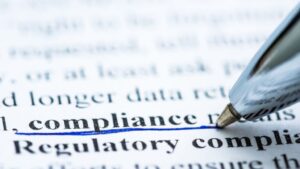Cryptocurrency and blockchain auditing are emerging as integral aspects of modern risk management and control strategies, challenging auditors to adapt and innovate in order to effectively navigate the intricacies of these digital technologies.
From the perspective of an internal auditor, the audit of crypto is a review of an organization’s use of cryptocurrencies for different transactions, such as the use of Bitcoin, Ethereum, etc. The use of crypto and its audit ensure that proper controls are in place. Crypto assets have their intricacies, and a crypto audit resembles with cash or foreign exchange audit. The audit of a blockchain involves a review of the controls used by the organization.
Auditing cryptocurrency and blockchains don’t have to be much different than auditing other areas of a business. You may need to bring on additional staff that has experience with digital assets, as well as take a more proactive approach. In general, the process is similar to auditing other areas, like the cloud, or even existing financial practices, like cash management.
Practical Guide to Effective Cryptocurrency and Blockchain Auditing
Below are the techniques to audit the crypto effectively:
Assess Crypto and Blockchain Usage
The first step to auditing the crypto and blockchain is to find out what the organization’s current and planned usage of the technology and currency looks like. If the finance department manages cryptocurrencies, for example, then it is hard to implement proper controls. Future usage should be considered, to get a sense of whether the organization has the right resources in place to manage cryptocurrency-related risks.
Identify Top Risks
Once the auditor has a good handle on the organization’s use of crypto and blockchain, it can begin identifying the potential top risks that are involved in cryptocurrencies.
For example, the auditor might assess whether the finance team has the right systems and tools needed to track the cryptocurrency transactions, as easily as any other organization asset. As cryptocurrency investors use different crypto exchanges and wallets, it can be difficult to find data on every buying and selling event.
The use of cryptocurrencies usually differs from that of an individual investor, and the auditor may want to make sure that the data and information related to the cryptocurrency transactions are not trapped in disparate systems.
The auditor reviews the risks related to data security and plans to understand that not all blockchains are the same. The auditor needs to take action and collaborate with T leaders, to assess if the blockchains you’re using and the associated cyber protocols are keeping the data secure.
These are just a few of the many risks that can come about with crypto and blockchain usage. Internal auditors should work with other departments to assess what those top risks look like within your organization and how they can be effectively managed.
Establish Controls
After the identification of the top cryptocurrency risks and control weaknesses, better controls are suggested to the management for the overall and process-specific crypto operations.
Final Thoughts
As the adoption of cryptocurrencies and blockchain technologies become increasingly mainstream in business operations, internal auditing plays a critical role in establishing effective risk management and control mechanisms. By thoroughly understanding an organization’s use of these technologies, identifying potential risks, and developing robust controls, auditors can help safeguard the integrity and security of transactions, ensuring compliance with financial regulations.
Adapting traditional audit practices to suit the unique intricacies of the crypto realm does not only necessitate a keen understanding of the technology but also demands a proactive approach and possibly, the inclusion of expertise in digital assets. The task, although challenging, is essential in fostering transparency, trust, and efficiency in an increasingly digital economic landscape.


